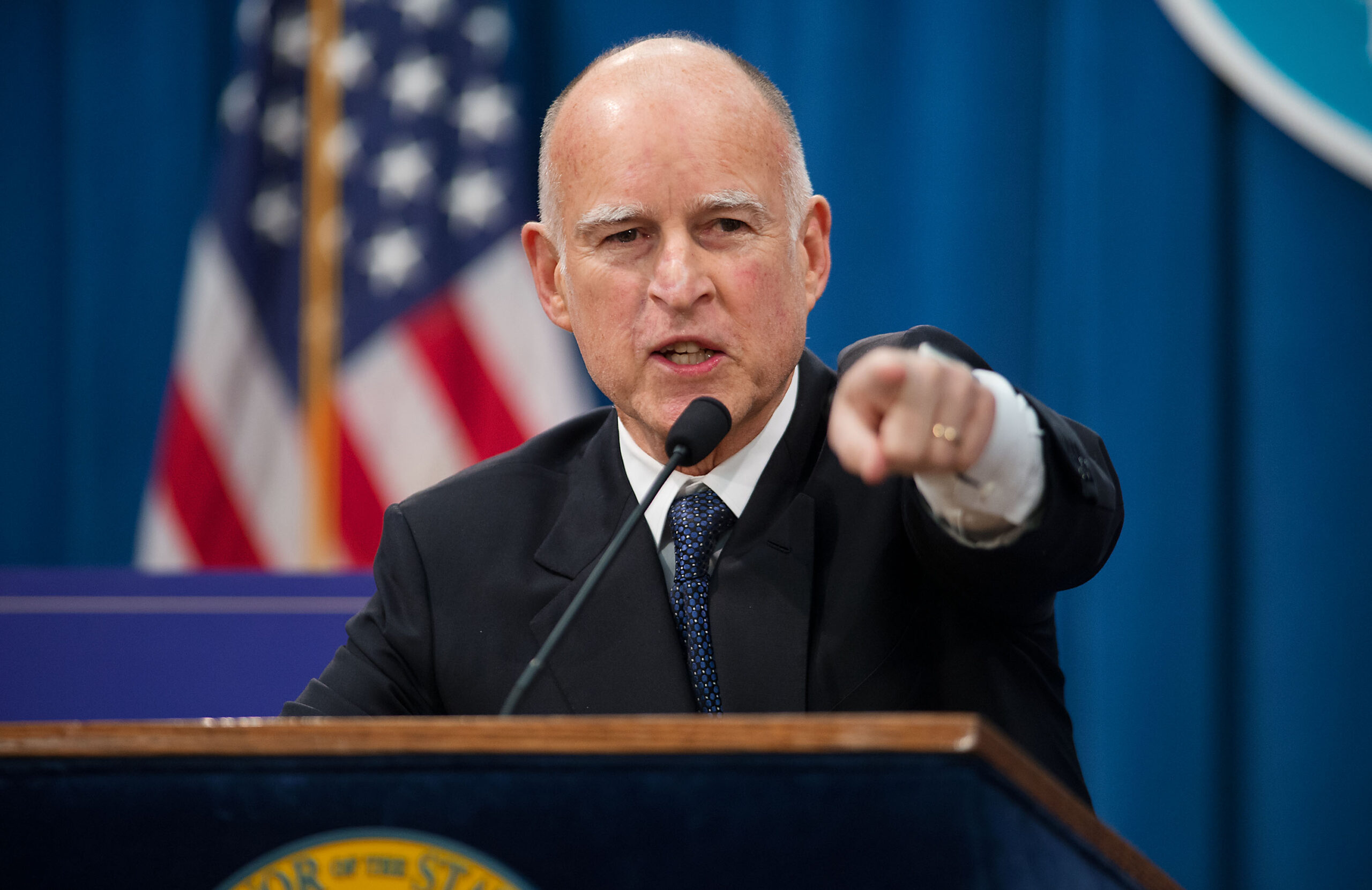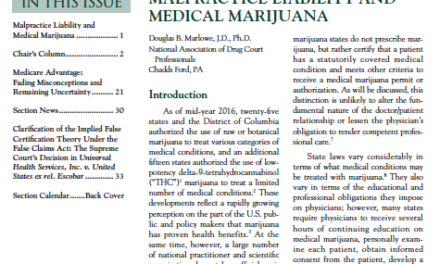(a) Beginning with fiscal year 2017-2018 the Department of Finance shall estimate revenues to be received pursuant to sections 34011 and 34012 and provide those estimates to the Controller no later than June 15 of each year. The Controller shall use these estimates when disbursing funds pursuant to this section. Before any funds are disbursed pursuant to subdivisions (b) , (c) , (d) , and (e) of this section the Controller shall disburse from the Tax Fund to the appropriate account, without regard to fiscal year, the following:
(1) Reasonable costs incurred by the board for administering and collecting the taxes imposed by this part; provided, however; such costs shall not exceed four percent (4%) of tax revenues received.
(2) Reasonable costs incurred by the Bureau, the Department of Consumer Affairs, the Department of Food and Agriculture, and the Department of Public Health for implementing, administering, and enforcing Chapter 3.5 of Division 8 of the Business and Professions Code and Division 10 of the Business and Professions Code to the extent those costs are not reimbursed pursuant to Section 26180 of the Business and Professions Code or pursuant to Chapter 3.5 of Division 8 of the Business and Professions Code. This paragraph shall remain operative through fiscal year 2022-2023.
(3) Reasonable costs incurred by the Department of Fish and Wildlife, the State Water Resources Control Board, and the Department of Pesticide Regulation for carrying out their respective duties under Chapter 3.5 of Division 8 of the Business and Professions Code or Division 10 of the Business and Professions Code to the extent those costs are not otherwise reimbursed.
(4) Reasonable costs incurred by the Controller for performing duties imposed by the Control, Regulate and Tax Adult Use of Marijuana Act, including the audit required by Section 34020.
(5) Reasonable costs incurred by the State Auditor for conducting the performance audit pursuant to Section 26191 of the Business and Professions Code.
(6) Reasonable costs incurred by the Legislative Analyst’s Office for performing duties imposed by Section 34017.
(7) Sufficient funds to reimburse the Division of Labor Standards Enforcement and Occupational Safety and Health within the Department of Industrial Relations and the Employment Development Department for the costs of applying and enforcing state labor laws to licensees under Chapter 3.5 of Division 8 of the Business and Professions Code and Division 10 of the Business and Professions Code.
(b) The Controller shall next disburse the sum of ten million dollars ($10, 000, 000) to a public university or universities in California annually beginning with fiscal year 2018-2019 until fiscal year 2028-2029 to research and evaluate the implementation and effect of the Control, Regulate and Tax Adult Use of Marijuana Act, and shall, if appropriate, make recommendations to the Legislature and Governor regarding possible amendments to the Control, Regulate and Tax Adult Use of Marijuana Act. The recipients of these funds shall publish reports on their findings at a minimum of every two years and shall make the reports available to the public. The Bureau shall select the universities to be funded. The research funded pursuant to this subdivision shall include but not necessarily be limited to:
(1) Impacts on public health, including health costs associated with marijuana use, as well as whether marijuana use is associated with an increase or decrease in use of alcohol or other drugs.
(2) The impact of treatment for maladaptive marijuana use and the effectiveness of different treatment programs.
(3) Public safety issues related to marijuana use, including studying the effectiveness of the packaging and labeling requirements and advertising and marketing restrictions contained in the Act at preventing underage access to and use of marijuana and marijuana products, and studying the health-related effects among users of varying potency levels of marijuana and marijuana products.
(4) Marijuana use rates, maladaptive use rates for adults and youth, and diagnosis rates of marijuana-related substance use disorders.
(5) Marijuana market prices, illicit market prices, tax structures and rates, including an evaluation of how to best tax marijuana based on potency, and the structure and function of licensed marijuana businesses.
(6) Whether additional protections are needed to prevent unlawful monopolies or anti- competitive behavior from occurring in the nonmedical marijuana industry and, if so, recommendations as to the most effective measures for preventing such behavior.
(7) The economic impacts in the private and public sectors, including but not necessarily limited to, job creation, workplace safety, revenues, taxes generated for state and local budgets, and criminal justice impacts, including, but not necessarily limited to, impacts on law enforcement and public resources, short and long term consequences of involvement in the criminal justice system, and state and local government agency administrative costs and revenue.
(8) Whether the regulatory agencies tasked with implementing and enforcing the Control,
Regulate and Tax Adult Use of Marijuana Act are doing so consistent with the purposes of the Act, and whether different agencies might do so more effectively. (9) Environmental issues related to marijuana production and the criminal prohibition of marijuana production.
(10) The geographic location, structure, and function of licensed marijuana businesses, and demographic data, including race, ethnicity, and gender, of license holders.
(11) The outcomes achieved by the changes in criminal penalties made under the Control, Regulate, and Tax Adult Use of Marijuana Act for marijuana-related offenses, and the outcomes of the juvenile justice system, in particular, probation-based treatments and the frequency of up- charging illegal possession of marijuana or marijuana products to a more serious offense.
(c) The Controller shall next disburse the sum of three million dollars ($3, 000, 000) annually to the Department of the California Highway Patrol beginning fiscal year 2018-2019 until fiscal year 2022-2023 to establish and adopt protocols to determine whether a driver is operating a vehicle while impaired, including impairment by the use of marijuana or marijuana products, and to establish and adopt protocols setting forth best practices to assist law enforcement agencies. The department may hire personnel to establish the protocols specified in this subdivision. In addition, the department may make grants to public and private research institutions for the purpose of developing technology for determining when a driver is operating a vehicle while impaired, including impairment by the use of marijuana or marijuana products.
(d) The Controller shall next disburse the sum of ten million dollars ($10, 000, 000) beginning fiscal year 2018-2019 and increasing ten million dollars ($10, 000, 000) each fiscal year thereafter until fiscal year 2022-2023, at which time the disbursement shall be fifty million dollars ($5 0, 000, 000) each year thereafter, to the Governor’s Office of Business and Economic Development, in consultation with the Labor and Workforce Development Agency and the Department of Social Services, to administer a Community Reinvestments grants program to local health departments and at least fifty-percent to qualified community-based nonprofit organizations to support job placement, mental health treatment, substance use disorder treatment, system navigation services, legal services to address barriers to reentry, and linkages to medical care for communities disproportionately affected by past federal and state drug policies. The Office shall solicit input from community-based job skills, job placement, and legal service providers with relevant expertise as to the administration of the grants program. In addition, the Office shall periodically evaluate the programs it is funding to determine the effectiveness of the programs, shall not spend more than four percent (4%) for administrative costs related to implementation, evaluation and oversight of the programs, and shall award grants annually, beginning no later than January 1, 2020.
(e) The Controller shall next disburse the sum of two million dollars ($2, 000, 000) annually to the University of California San Diego Center for Medicinal Cannabis Research to further the objectives of the Center including the enhanced understanding of the efficacy and adverse effects of marijuana as a pharmacological agent.
(f) By July 15 of each fiscal year beginning in fiscal year 2018-2019, the Controller shall, after disbursing funds pursuant to subdivisions (a) , (b) , (c) , (d) , and (e) , disburse funds deposited in the Tax Fund during the prior fiscal year into sub-trust accounts, which are hereby created, as follows:
(1) Sixty percent (60%) shall be deposited in the Youth Education, Prevention, Early Intervention and Treatment Account, and disbursed by the Controller to the Department of Health Care Services for programs for youth that are designed to educate about and to prevent substance use disorders and to prevent harm from substance use. The Department of Health Care services shall enter into inter-agency agreements with the Department of Public Health and the Department of Education to implement and administer these programs. The programs shall emphasize accurate education, effective prevention, early intervention, school retention, and timely treatment services for youth, their families and caregivers. The programs may include, but are not limited to, the following components:
(A) Prevention and early intervention services including outreach, risk survey and education to youth, families, caregivers, schools, primary care health providers, behavioral health and substance use disorder service providers, community and faith-based organizations, foster care providers, juvenile and family courts, and others to recognize and reduce risks related to substance use, and the early signs of problematic use and of substance use disorders.
(B) Grants to schools to develop and support Student Assistance Programs, or other similar programs, designed to prevent and reduce substance use, and improve school retention and performance, by supporting students who are at risk of dropping out of school and promoting alternatives to suspension or expulsion that focus on school retention, remediation, and professional care. Schools with higher than average dropout rates should be prioritized for grants.
(C) Grants to programs for outreach, education and treatment for homeless youth and out-of- school youth with substance use disorders.
(D) Access and linkage to care provided by county behavioral health programs for youth, and their families and caregivers, who have a substance use disorder or who are at risk for developing a substance use disorder.
(E) Youth-focused substance use disorder treatment programs that are culturally and gender competent, trauma-informed, evidence-based and provide a continuum of care that includes, screening and assessment (substance use disorder as well as mental health) , early intervention, active treatment, family involvement, case management, overdose prevention, prevention of communicable diseases related to substance use, relapse management for substance use and other co-occurring behavioral health disorders, vocational services, literacy services, parenting classes, family therapy and counseling services, medication-assisted treatments, psychiatric medication and psychotherapy. When indicated, referrals must be made to other providers.
(F) To the extent permitted by law and where indicated, interventions shall utilize a two- generation approach to addressing substance use disorders with the capacity to treat youth and adults together. This would include supporting the development of family-based interventions that address substance use disorders and related problems within the context of families, including parents, foster parents, caregivers and all their children.
(G) Programs to assist individuals, as well as families and friends of drug using young people, to reduce the stigma associated with substance use including being diagnosed with a substance use disorder or seeking substance use disorder services. This includes peer-run outreach and education to reduce stigma, anti-stigma campaigns, and community recovery networks.
(H) Workforce training and wage structures that increase the hiring pool of behavioral health staff with substance use disorder prevention and treatment expertise. Provide ongoing education and coaching that increases substance use treatment providers’ core competencies and trains providers on promising and evidenced-based practices.
(I) Construction of community-based youth treatment facilities.
(J) The departments may contract with each county behavioral health program for the provision of services.
(K) Fund shall be allocated to counties based on demonstrated need, including the number of youth in the county, the prevalence of substance use disorders among adults, and confirmed through statistical data, validated assessments or submitted reports prepared by the applicable county to demonstrate and validate need.
(L) The departments shall periodically evaluate the programs they are funding to determine the effectiveness of the programs.
(M) The departments may use up to four percent (4%) of the moneys allocated to the Youth Education, Prevention, Early Intervention and Treatment Account for administrative costs related to implementation, evaluation and oversight of the programs.
(N) If the Department of Finance ever determines that funding pursuant to marijuana taxation exceeds demand for youth prevention and treatment services in the state, the departments shall provide a plan to the Department of Finance to provide treatment services to adults as well as youth using these funds.
(O) The departments shall solicit input from volunteer health organizations, physicians who treat addiction, treatment researchers, family therapy and counseling providers, and professional education associations with relevant expertise as to the administration of any grants made pursuant to this paragraph.
(2) Twenty percent (20%J shall be deposited in the Environmental Restoration and Protection Account, and disbursed by the Controller as follows:
(A) To the Department of Fish and Wildlife and the Department of Parks and Recreation for the cleanup, remediation, and restoration of environmental damage in watersheds affected by marijuana cultivation and related activities including, but not limited to, damage that occurred prior to enactment of this part, and to support local partnerships for this purpose. The Department of Fish and Wildlife and the Department of Parks and Recreation may distribute a portion of the funds they receive from the Environmental Restoration and Protection Account through grants for purposes specified in this paragraph.
(B) To the Department of Fish and Wildlife and the Department of Parks and Recreation for the stewardship and operation of state-owned wildlife habitat areas and state park units in a manner that discourages and prevents the illegal cultivation, production, sale and use of marijuana and marijuana products on public lands, and to facilitate the investigation, enforcement and prosecution of illegal cultivation, production, sale, and use of marijuana or marijuana products on public lands.
(C) To the Department of Fish and Wildlife to assist in funding the watershed enforcement program and multiagency taskforce established pursuant to subdivisions (b) and (c) of Section 12029 of the Fish and Game Code to facilitate the investigation, enforcement, and prosecution of these offenses and to ensure the reduction of adverse impacts of marijuana cultivation, production, sale, and use on fish and wildlife habitats throughout the state.
(D) For purposes of this paragraph, the Secretary of the Natural Resources Agency shall determine the allocation of revenues between the departments. During the first five years of implementation, first consideration should be given to funding purposes specified in subparagraph (A).
(E) Funds allocated pursuant to this paragraph shall be used to increase and enhance activities described in subparagraphs (A), (B), and (C), and not replace allocation of other funding for these purposes. Accordingly, annual General Fund appropriations to the Department of Fish and Wildlife and the Department of Parks and Recreation shall not be reduced below the levels provided in the Budget Act of 2014 (Chapter 25 of Statutes of 2014J.
(3) Twenty percent (20%J shall be deposited into the State and Local Government Law Enforcement Account and disbursed by the Controller as follows:
(A) To the Department of the California Highway Patrol for conducting training programs for detecting, testing and enforcing laws against driving under the influence of alcohol and other drugs, including driving under the influence of marijuana. The Department may hire personnel to conduct the training programs specified in this subparagraph.
(B) To the Department of the California Highway Patrol to fund internal California Highway Patrol programs and grants to qualified nonprofit organizations and local governments for education, prevention and enforcement of laws related to driving under the influence of alcohol and other drugs, including marijuana; programs that help enforce traffic laws, educate the public in traffic safety, provide varied and effective means of reducing fatalities, injuries and economic losses from collisions; and for the purchase of equipment related to enforcement of laws related to driving under the influence of alcohol and other drugs, including marijuana.
(C) To the Board of State and Community Corrections for making grants to local governments to assist with law enforcement, fire protection, or other local programs addressing public health and safety associated with the implementation of the Control, Regulate and Tax Adult Use of
Marijuana Act. The Board shall not make any grants to local governments which have banned the cultivation, including personal cultivation under Section l l 362.2(b) (3) of the Health and Safety Code, or retail sale of marijuana or marijuana products pursuant to Section 26200 of the Business and Professions Code or as otherwise provided by law.
(D) For purposes of this paragraph the Department of Finance shall determine the allocation of revenues between the agencies; provided, however, beginning in fiscal year 2022-2023 the amount allocated pursuant to subparagraph (A) shall not be less than ten million dollars
($10, 000, OOOJ annually and the amount allocated pursuant to subparagraph (B) shall not be less than forty million dollars ($40, 000, OOOJ annually. In determining the amount to be allocated before fiscal year 2022-2023 pursuant to this paragraph, the Department of Finance shall give initial priority to subparagraph (A) .
(g) Funds allocated pursuant to subdivision (f) shall be used to increase the funding of programs and purposes identified and shall not be used to replace allocation of other funding for these purposes.
(h) Effective July 1, 2028, the Legislature may amend this section by majority vote to further the purposes of the Control, Regulate and Tax Adult Use of Marijuana Act, including allocating funds to programs other than those specified in subdivisions (d) and (f) of this section. Any revisions pursuant to this subdivision shall not result in a reduction of funds to accounts established pursuant to subdivisions (d) and(f) in any subsequent year from the amount allocated to each account in fiscal year 2027-2028. Prior to July 1, 2028, the Legislature may not change the allocations to programs specified in subdivisions (d) and(f) of this section.





